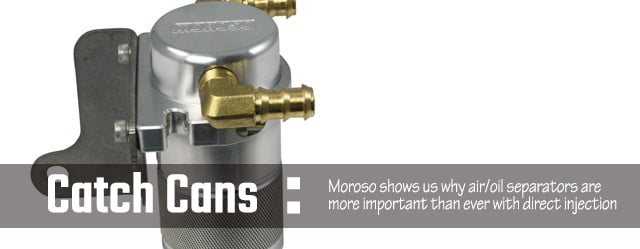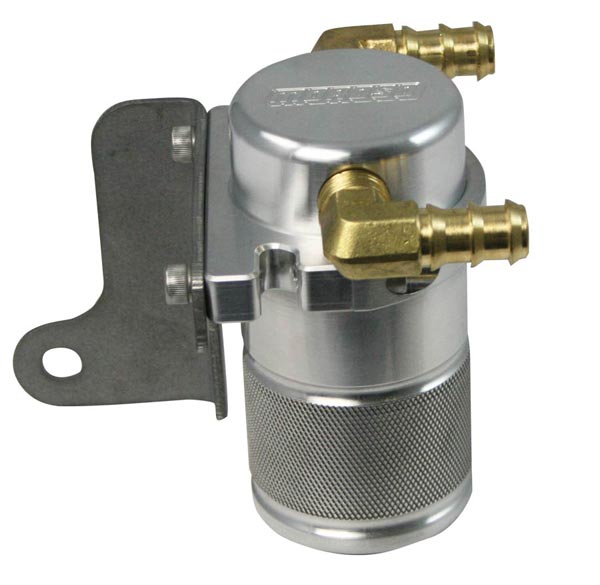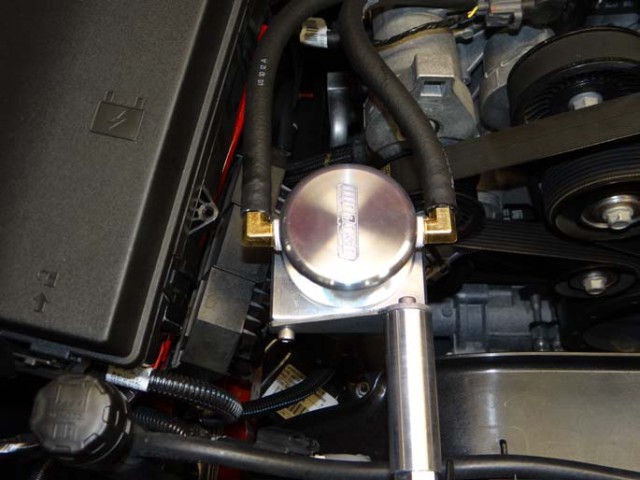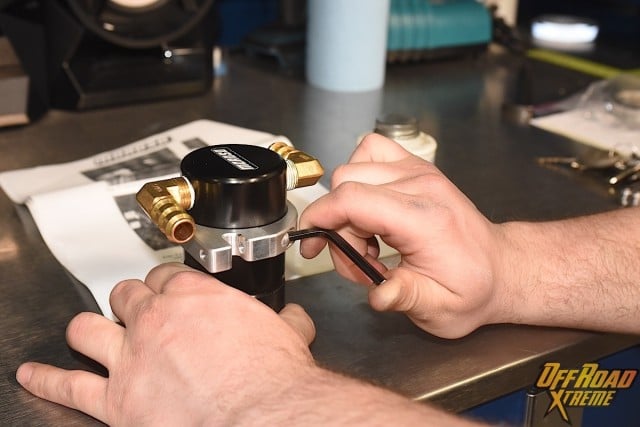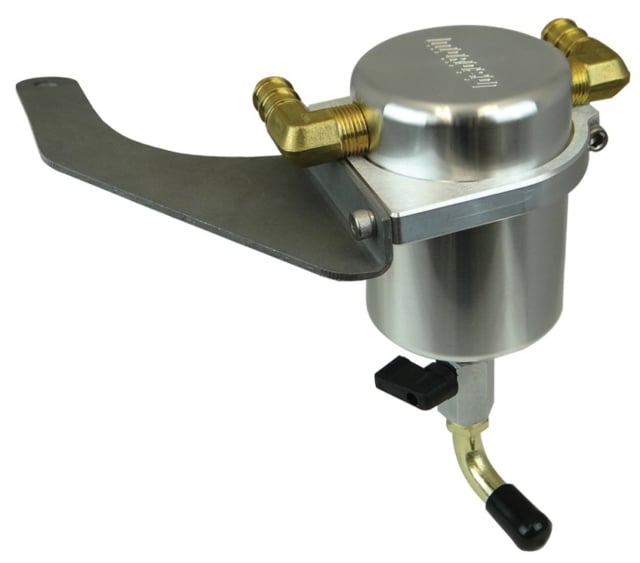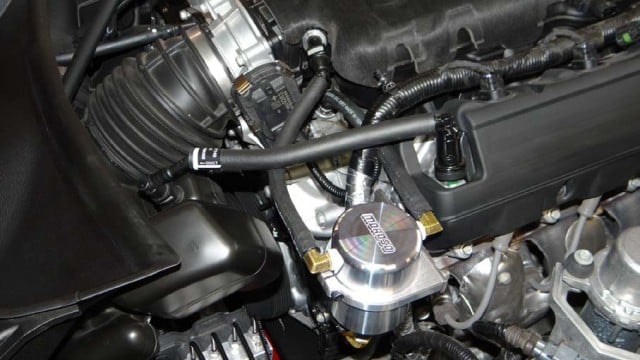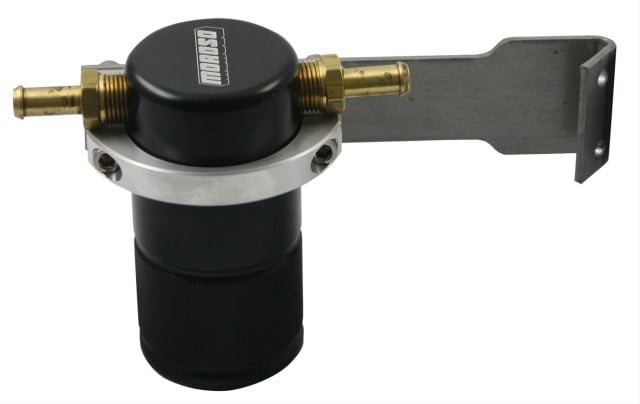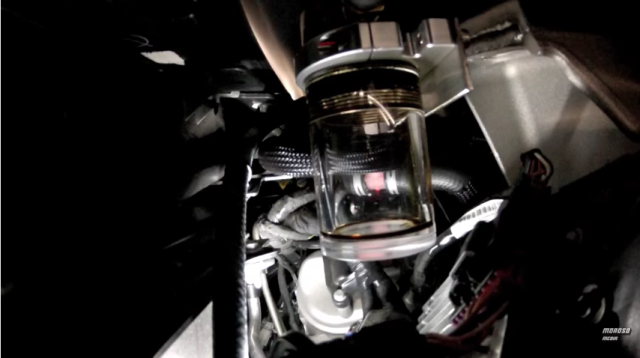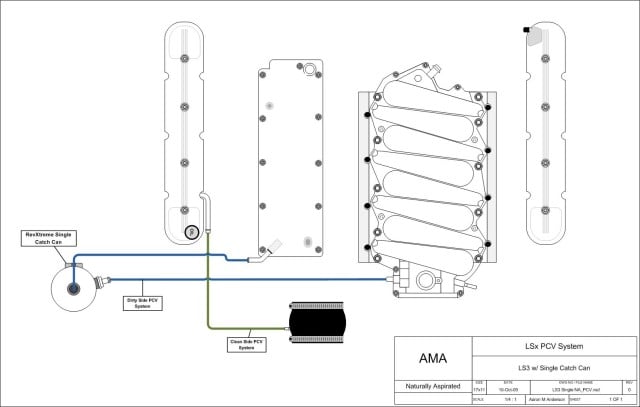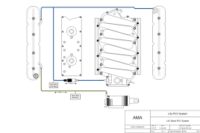If you haven’t heard that you should be running an air/oil separator—more commonly known as a catch can—on your car by now, your friends either don’t care for your car’s welfare or you really like sucking vaporized oil into your intake tract (people are into weird stuff, it’s not our job to judge). Either way, it’s high time that you put one on your LS- or LT-powered ride. Why? Because we say so; but since you probably need more persuading/information than that, we turned to the guys over at Moroso to give you more of a technical background on why you should be running one and what the benefits are–especially when it comes to direct injection equipped vehicles. But first lets take a look at the stock system’s operation.
Full Of Hot Gas
PCV stands for positive crankcase ventilation. Some think of it as an unnecessary piece of emissions equipment designed by “the man” to keep all of us horsepower worshipers down. However, this is far from the truth and not only does the PCV system affect emissions production, it also impacts engine longevity, oil life, and the all-important horsepower number.
While the PCV system may be part of the emissions system (yes, it is in fact part of your emissions system), it has much further ranging implications than what is and isn’t transferred to the atmosphere. It is true, however, that up to 20 percent of the total hydrocarbon emissions produced by a vehicle are the result of blow-by; or, in other words, combustion gases that make their way past the piston rings under normal vehicle operation that would otherwise be released to the atmosphere without a PCV system.
This blow-by does several things once it passes into your crankcase. First, it contaminates the oil. This leads to quicker breakdown of the lubricant and can allow fuel particles to travel to critical components, preventing the oil from doing its job and causing premature engine wear. Next, it can cause moisture to accumulate in the crankcase, leading to the premature corrosion of parts, sludge build up, and again, premature wear. Finally, the blow-by gases create pressure in the crankcase. This causes the engine to work harder to spin and prevents the rings from sealing against their bores properly, costing you power and creating more blow-by gases, which then becomes a vicious cycle.
Why Use PCV (Not the drug)
Before 1960, most cars on the road didn’t have a PCV system—and you were lucky to get 100,000 miles out of them. But, in the early 1960s, the PCV system emerged in California (of course, right?). While it may have just been an annoying new emissions system when it was first released, it quickly proved to have more benefits—which we previously detailed—than just emissions reductions.
This quickly lead to the implementation of PCV systems across the board starting in 1963. Most of these early systems were considered “open” systems. This meant that they were connected to a manifold vacuum source on one end and drew fresh air into the system through a mesh filter inside the oil filler cap or a breather. While this system was lightyears ahead of those that didn’t utilize PCV, they still had minor flaws. In an open system, there is nothing stopping engine vapors from backing up at high engine RPM. This would often lead to crankcase gases leaking back out of the fresh air intake side of the system (i.e. the oil cap or breather).
This lead manufacturers to develop a “closed” system. This system implemented a PCV valve into the mix. The PCV valve is basically a one-way valve that only allows crankcase gases to flow one way in the system. This prevents the system from “backing up.” The valve is typically spring loaded—though some are simply pressure operated—and limits the amount of crankcase ventilation depending on vacuum. Also, in a closed system, it draws air from a clean air source, such as the air cleaner or intake tube, on one side and is connected to an after-throttle-body source on the other. This prevents the system from gumming up the throttle blade.
On closed systems, it is important to remember that converting them to an open system without the right modifications is a bad idea. Since the PCV system is drawing air into the manifold, if you open the system to outside air, it will function in the same manner as a massive vacuum leak, since the computer in modern systems has no way of metering the air entering the manifold not drawn through the intake system. This means that the computer hasn’t accounted for that extra volume of air and can lead to drivability issues and cause the engine to run lean.
The Black Lung
As you can plainly see, PCV systems are not only necessary for the longevity of your engine and to prevent harmful emissions from escaping into the atmosphere, but they also increase horsepower and can even lengthen oil change intervals. While PCV systems have come a long way since the initial “open” designs of the early ‘60s and ‘70s, that doesn’t mean there still isn’t room for improvement.
Your factory system does a pretty good job at what it was designed to do, but it still may have a few problems. As air is being drawn through the system, oil that has been vaporized or atomized by high heat or rapidly moving parts, makes its way into the air. This air is then drawn through the system and into the intake manifold. If you have ever taken the throttle body off of your LS, you know that the inside of the intake manifold is typically coated in oil. This is because the PCV system is constantly drawing oil-ladened air into it.
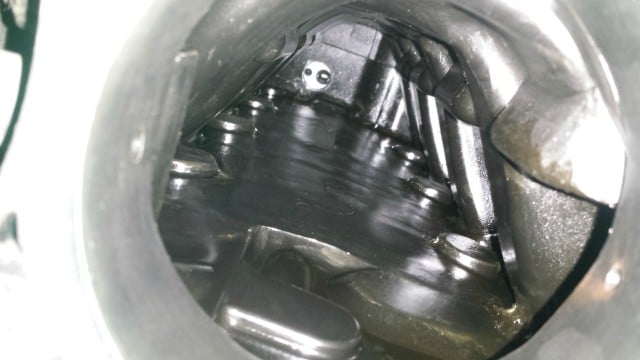
Oil coats the inside of this LS2 intake manifold. All of this could have been prevented with the use of an air/oil separator. Via LS1tech.com user bmylez.
The problem is that carbon build up on the intake valves can be an unintended side effect. This can be prevented by using a proper air/oil separator system that filters out these impurities before they build up on the valves.– Thor Schroeder
This can cause several problems. First of all, as the oil accumulates and builds it can narrow down intake passages. While this is typically very minimal, over time it can create a lot of problems. The next concern is that the atomized oil can accumulate on the intake valve. This causes a build up and can impede airflow resulting in decrease performance and fuel milage. Chunks of the build up on the intake valve can eventually break free and be sucked into the combustion chamber. Once under compression, these particles can create hot spots in the combustion chamber leading to pre-ignition, otherwise known as detonation or knock. As you are probably aware, knock is the destroyer of worlds and factory motors alike—something most of us would like to avoid at all cost.
Direct Injection
While oil build up can and does occur on intake valves, it is far more likely to happen inside the combustion chamber. That is because the fuel injector typically sprays directly on the intake valve, cleaning it with gasoline (just like the Chevron commercial used to show you). However, with the advent of direct injection, this will become more and more of a problem since the fuel injector is squirting directly into the combustion chamber and thus isn’t positioned to clean off the intake valve.
“The auto industry has been gradually switching over to direct injection because of its many benefits,” said Thor Schroeder of Moroso. “By spraying a controlled amount of fuel directly into an engine’s combustion chamber, you can create more power with less fuel.The problem is that carbon build up on the intake valves can be an unintended side effect. This can be prevented by using a proper air/oil separator system that filters out these impurities before they build up on the valves.”
Carbon deposits due to oil ingestion can lead to hot spots inside the combustion chamber. Pieces of carbon can also become dislodged and again act as a catalyst for preignition or even a nitrous backfire if you happen to be running it. This becomes even more of a concern as manufacturers turn to direct injection and power adders to increase horsepower and fuel economy.
Why Not The Factory?
So, now that you’re up to speed on all things PCV you may be asking yourself “why don’t manufacturers install a catch can right from the get go?” That’s a good question. For the answer, we turned to Moroso for a little insight into catch can technology.
“Manufacturers are concerned that their average consumer base would not properly monitor an air/oil separator system,” Schroeder said. “A proper air/oil separator system needs to be checked every three or so gas fill-ups to see if the body needs to be drained. Unfortunately, not everyone cares about optimizing the performance and longevity of their cars and these are the people auto manufacturers have to consider when deciding whether or not to implement a system like this. It becomes safer for them not to install if it will go unchecked.”
The amount you’ll need to check and drain your catch can will vary by the amount and intensity at which you drive your car. In our experience, draining it once every oil change has been adequate but if you are harsher on your vehicle than we are, it would benefit you to check it more often. A clear can or other means of being able to check the oil level on the air/oil separator quickly can make life a lot easier (Moroso now sells clear cans just for this particular conundrum).
“Not only does an air-oil separator system keep the intake track cleaner, it increases performance by not allowing harmful deposits to form on critical components or in critical areas,” Schroeder said.
Beware Of Imitations
While a catch can seems fairly simple in its operation, there is often more to it than meets the eye. Before you run out and buy just any old catch can off of eBay, there are some things you need to know. There is a drastic difference between just a catch can and an air/oil separator.
Moroso has invested countless hours of development and dyno testing to insure that their air/oil separators (which are combined with a catch can) take as much vapor out of the incoming air charge as possible. On the other hand, most catch cans you find on eBay or other sites typically are just that, catch cans. They offer no baffling or anything to separate oil from air, aside from just being a chamber that air passes in and out of freely. While this may take some oil and water out of the air circulating through the system PCV system due to the increased surface area, there is little to prevent oil-ladened air from entering and exiting the open chamber at will.
This is why you want to be sure that you are buying a quality product that has the construction to get the job done. And, as we all know, when it comes to go-fast parts, you typically get what you pay for.
“We were able to take our vast pool of knowledge and experience in the oiling, breather tank and vacuum pump product lines to create vehicle-specific and universal air/oil separator products that offer superior separation of air and oil, a bottom drain on our large body air/oil separators, and vehicle specific applications backed by Moroso’s detailed instructions, customer service and tech departments,” Schroeder said.
How Much Oil Is Being Used?
And if you were wondering exactly how much oil exactly your engine is consuming we recommend one of two things: A. install one for yourself to see just how much oil you are preventing from reaching the intake tract, or B. watch the video below as Moroso runs a CTS-V around a road course to show you just how much oil you can keep out of critical areas. Either way, a catch can is cheap insurance, especially in power adder applications.
“A Customer of our’s recently installed an air/oil separator system on his C7 Corvette which had roughly 5,000 miles on it at the time,” Schroeder said. “This particular customer does open track events with the car (HPDE) and after four 20 to 25 minute sessions he collects, on average, 7.15 ounces of oil/water in the can.”
If the video above or Schroeder anecdotical evidence doesn’t convince you to run one, nothing will. Not only will it keep everything cleaner, it will allow you to make more horsepower in the long run and we think that draining it every 3-4 fill ups is a small price to pay to keep detonation at bay.
If you’re going to install one yourself, we’ve added some charts to show you just how to route everything. After you’ve installed one, you can send us your thanks after you drain it at your next oil change.
(Right) The stock PCV routing on an LS1 that uses a valve cover system. There are other models that draw from a valley cover like the LS3 system pictured above. (Left) How to route an LS1 system that uses valve cover ports.



